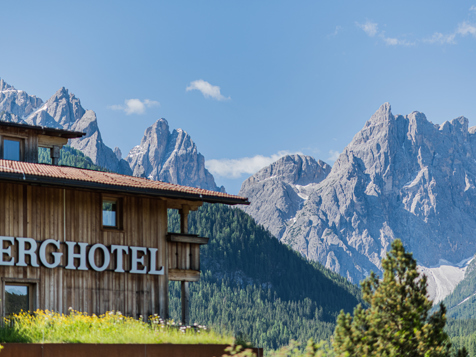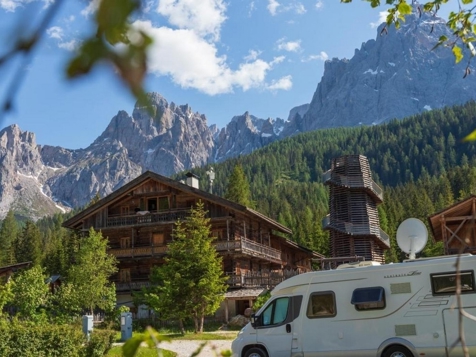












Mountain warfare
With the Italian declaration of war against the Austro-Hungarian forces, a sad chapter in the history of the Dolomites had begun: The area surrounding the Three Peaks has become a battleground, with the “Kaiserjäger” soldiers on the Austrian side against the “Alpini” on the Italian side, fighting for each metre under the toughest conditions.
Gruelling static warfare
The soldiers on both sides excavated miles long tunnels and galleries in the Dolomites mountains, built temporary emplacements and cableway stations, trenches and caverns. Supply up high in the mountains was difficult and in winter, the soldiers often had to wait for weeks without getting supplies, in their trenches on Mt. Paternkofel, on Mt. Lagazuoi or on Marmolata, without obtaining supplies.
The static warfare lasted almost four years and had a fatal ending for many soldiers on both sides. In fact, around 8,00o soldiers only died on Col di Lana, whose peak was burst. During the mountain war, more soldiers died of hunger and cold, avalanches and rockfalls than from hostile projectiles. 1,259 soldiers are buried in the cemetery of Nasswand, 6 km south of Toblach towards Cortina d’Ampezzo, which is under monumental protection.
Against oblivion
The open-air museum on Sextner Rotwand (part of the Bellum Aquilarum) as well as on Monte Piana above Lake Dürrensee still offer remains of emplacements and tunnels reminding us about the war’s horror and deprivations. Also, hikers and mountaineers will find many proofs of the First World War in the Dolomites.
After the end of the war, many borders in Europe had changed and South Tyrol was annexed by Italy. The project Dolomites without borders emphasise not only the separating part but also the connecting aspect between Italy and Austria. The high-alpine path with 12 fixed-rope routes goes from Cadore, to Hochpustertal in the area f the Three Peaks to the Tyrolean Gailtal valley. As a transregional peace trail, it is an alpine challenge with memorable historical background.
Images
History
Selected accommodations in Sexten


- Sustainable
- Regional
- Organic
- Healthy
- Fair

5-star camping in the Dolomites, nature-oriented and flexible luxury holiday in the resort with pitches, tree houses, lodges and hotel, wellness area & climbing hall, gourmet restaurants & tavern.

- Family resort in the heart of the Dolomites
- Dolomit Panorama Spa of 2,000 m² with pools & saunas
- Indoor & outdoor Raini's World for children
- Excellent cuisine with attention to children
- Excursions & skiing directly organised by the resort


